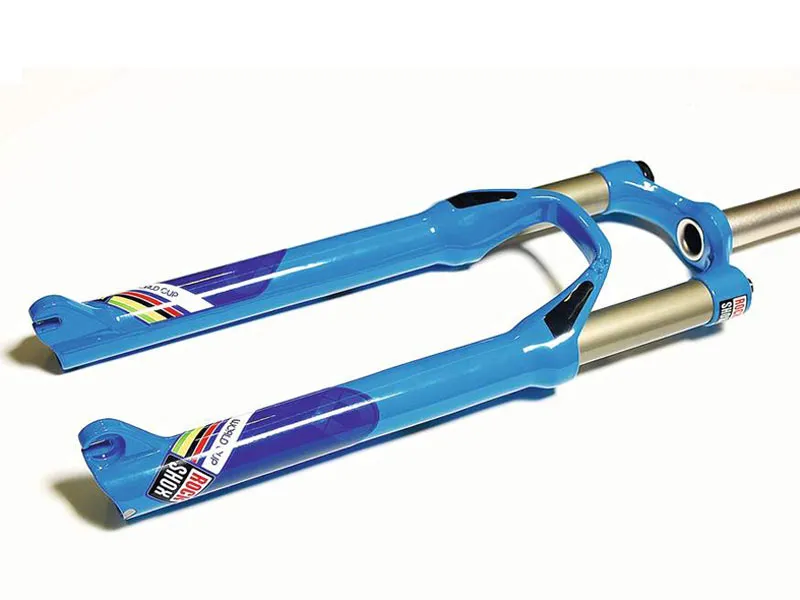Too much weight is heavy. Heavy is hard to lift, hard to push, hard to pedal, hard to get going and hard to stop. Heavy is bad. Lightness means weakness though. Weak breaks itself and breaks you too. Weak won’t go where you want it or ride how you want to ride. Weak is also bad.
Good and bad weight is about where it is though, not just the overall ‘pick it up’ mass of your machine. It’s about where weight is in relation to the centre of the bike and where it sits dynamically in relation to your riding or stress and performance loads.
For example, while your overall weight won’t change, running with heavy boots in a bag on your back is much easier than running while wearing those same boots on your feet and carrying your trainers in the bag. It’s the same with tyres too. Then again, if those heavy boots or tyres stop you falling on your arse or let you kick rocks out of the way, you’ll be glad that you were wearing them rather than carrying them.
Now it’s just a case of expanding that logic over the rest of your bike to create the ultimate free running, ass kicking ride
Shocks & Forks
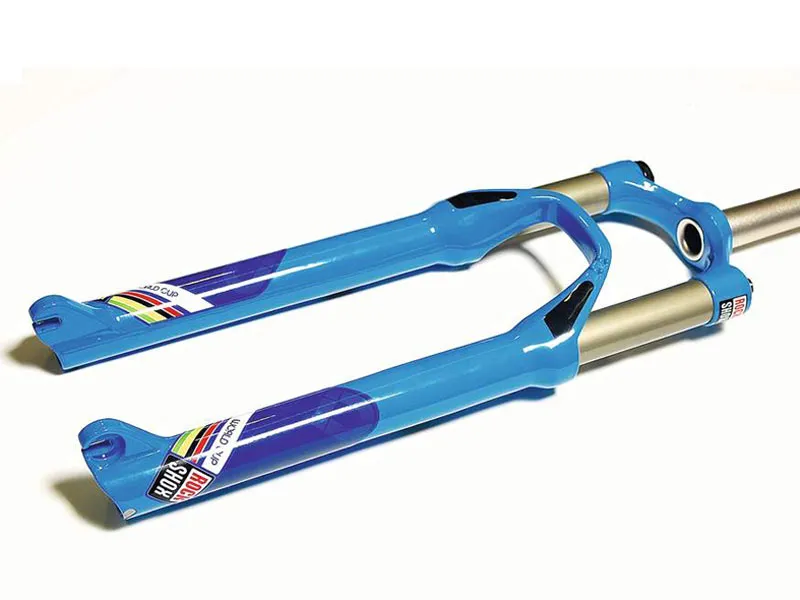
Suspension is an area where weight saving can actually make you slower if you’re not careful. Air forks and shocks are a lot smoother and more reliable than they used to be, but you still can’t beat a coil spring for ultimate cushioning. Another inch of travel or more steering authority from a bolt-through axle, or just a sturdier fork structure can make a big difference in how hard you can hit sections.
In other words, a few grams saved with a shorter fork or less rear travel won’t seem so fast when you’re braking into sections you used to fly through.
2kg marks the point at which forks are touch enough to take a beating or the occasional bad landing. The sturdiest forks add another 1kg of stout legged overlap and thick steerer strength.
Wheels
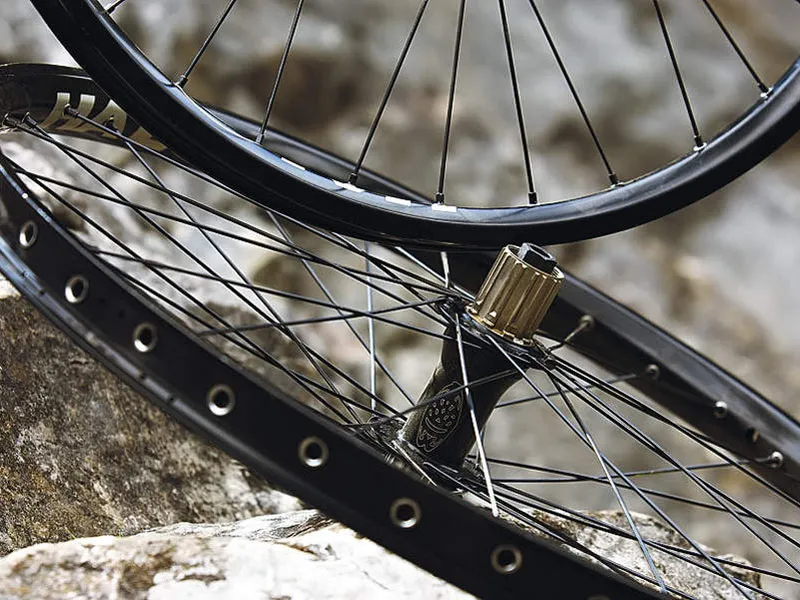
Wheel weight makes a massive dynamic difference. Not only are wheels at either end of your bike, but they are constantly being spun up to speed and then stopping. In fact, the leverages involved mean that weight saved in tyres or rims is worth double that anywhere else in terms of bike acceleration and responsiveness. That’s why XC racers run sub-400g Latex sealed tyres on skinny 350g rims and why many dirt jumpers are switching to 24in wheels for more airborne agility.
In contrast, big heavy tyres can plough through anything, give massive gyroscopic stability at speed and stick to the sketchiest line. Even 100g and fractions of an inch can make a big difference. In fact we’re sick of testing 6in bikes that have just squeezed under the 30lb mark by fitting fat but thin skinned tyres and thin inner tubes that just can’t cope with the speed the suspension allows.
At least tyres and inner tubes are relatively cheap to play around with and replace if you have to, so finding your ideal balance of speed, survivability and stability won’t be too expensive.
Tyres

Smooth freeriders can go under 1kg with the right tyre, trail riders should aim around 700g for a 2.3in, XC racers go for 500g for a 2in.
Frame
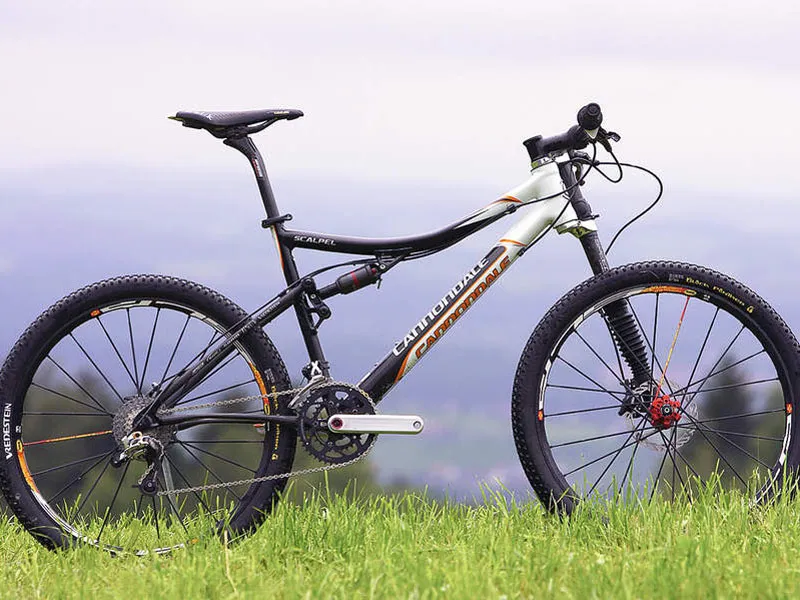
Frames potentially make the biggest difference to overall weight and manufacturers charge a fortune to chase out every excess gram, some even sacrificing seatpost adjustability for the weight advantage and fit finality of a cut-to-length ‘seatmast’. However while centralised frame weight makes the least dynamic ride difference, having a frame snap underneath you isn’t a risk to take lightly so think carefully before you cut the calories in your chassis.
The lightest XC freak frames are now round the 1kg mark for hardtails or 2kg for full sus, but you’re definitely in fragile territory here. Around 2kg gets you a sturdy trail ready hardtail frame while a 3kg suspension bike will be a buff all-mountaineer with 5-6in of travel. Anything over 4kg will be built for abuse.
The overall weight of your bike comes from the individual weight of several specific areas. Trimming the weight of these areas is what’ll make your bike perfect for you.
Bits and pieces
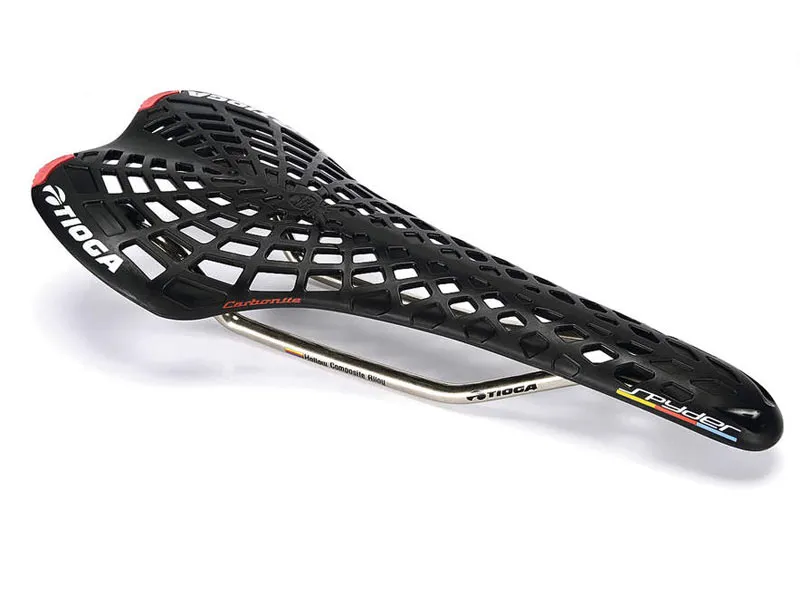
The ‘edges first’ rule applies to smart weight saving elsewhere too. For example losing 100g off a chainset sat in the bottom centre of your frame will be less noticeable dynamically than 100g off something from the outer edges bars, stem, disc brakes or saddle and seatpost.
Don’t let weight saving blind your common sense either. If that 100g off your chainset means changing from tough steel chainrings to light alloy ones that’ll only last a few months then it’s a pretty dumb move. Same goes for a superlight cockpit and seating set-up that won’t last five minutes down the dirt jumps. However, most DH racers now use ultralight seating gear because:
- they never actually sit on it and
- they can get another set from sponsors as soon as it splinters.
To most of us though, breaking bits is a real ball ache – quite literally if it’s your saddle that splits. So yet again, don’t go superlight unless the only thing you snap is the occasional trailside twig.
Mass loss maths
The final big part of smart weight saving is cost effectiveness. You can throw money at almost any component to get a lighter version that’s still strong. Some bits yield a much better lb per £ performance than others though and thankfully that’s easy to work out. Basically, you need to weigh the various bits you’re thinking of upgrading and compare them to the cost and weight of the new kit.
For example if you have a 300g seatpost and a 400g saddle you could spend £50 on a 250g seatpost or £25 on a 300g saddle. Smart money obviously goes with the 2g per £1 saving on the saddle against the 1g per £1 on the seatpost and this logic can be continued throughout the bike.
What about you?
Unless you’re as ripped as a Spartan from 300 losing some lard is the fastest and cheapest way to drop your overall riding weight. There are no shortcuts or miracle diets but here’s a few tips:
- Eat everything - Stop eating a specific food group – even fat or chocolate – and you’ll get pissed off and won’t stick with it. Just eat less of everything. One square of chocolate not three, one piece of toast even if the toaster has two slots. Food that you leave on the plate once you’ve had enough is not going to waste - no one in Rwanda is going to benefit from you forcing down a few extra chips. It will certainly go to your waist if you eat it though.
- Ride more, run more, walk more - Fat is best burned through low intensity, long duration exercise. Twenty minutes frenzied sweating will be fuelled by muscle reserves, because your body won’t even touch fat in an emergency. However, a steady two-hour ride or just a long walk at lunchtime will be fuelled almost entirely by fat.
- Concentrate on the positive - Look at the weight you’ve lost not the weight still there. Enjoy going faster uphill, don’t get angry because you’re still not the fastest.
- Be realistic - Aim to lose 2lbs a week by eating a bit less and riding a bit more. You’ll get sustainably and continually thinner without feeling cheated of treats or totally knackered. You’ll notice genuine changes in weeks and over the months you’ll morph into a mountain biking mean machine without missing out on anything.



